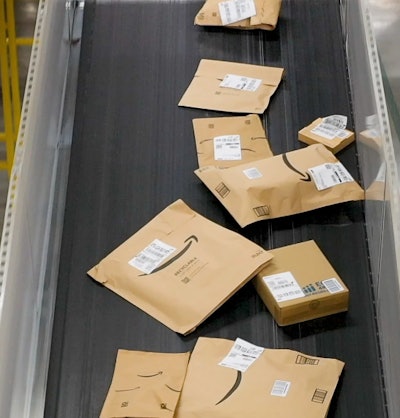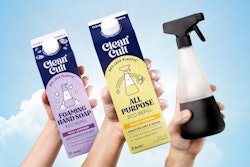Amazon's fulfillment center in Northeast Ohio has become the first in the U.S. to replace plastic delivery packaging with paper packaging completely, according to WKYC.com. This change is part of Amazon's broader initiative to make its packaging more environmentally friendly and encourage home recycling among its customers.
Traditionally, Amazon employed a mix of plastic and paper packaging to balance factors like durability, weight, and size. However, recycling plastic packaging often necessitates customer visits to drop-off locations, prompting Amazon's packaging engineers to explore alternatives over several years.
To shift to paper packaging, Amazon's team undertook significant efforts. They rebuilt existing machines to use paper, developed durable and flexible paper packaging solutions, improved made-to-fit technology, and replaced plastic air pillows with paper filler. These measures enabled the Euclid, Ohio, fulfillment center to make a full transition to paper packaging. This work is part of Amazon's multiyear endeavor to convert all its U.S. fulfillment centers to paper, ultimately enabling more customers to recycle at home.
Pat Lindner, VP of Mechatronics and Sustainable Packaging at Amazon, hailed this milestone and expressed a commitment to further reducing plastic packaging, marking the beginning of Amazon's eco-conscious journey.
Amazon's sustainability goals extend beyond curbside recyclable packaging; they also aim to minimize packaging materials. In recent years, Amazon has reduced packaging significantly through machine learning that identifies products suitable for lighter, smaller packaging. Such eco-friendly packages can be up to 90% lighter than traditional corrugated boxes.
Amazon's packaging engineers revamped their machines to create these lighter, smaller, and recyclable packages. These machines now employ built-in sensors to identify the correct size for non-padded paper packaging of various products, including clothing, kitchen supplies, and sports equipment. A heat-sealing technology ensures secure closures, reducing empty space and waste without compromising product safety. Additionally, Amazon developed a special paper that is stretchable, weather-resistant, and heat-sealable, thoroughly tested to ensure curbside recyclability.
In another significant development, Amazon invested in a machine that produces on-demand, curbside-recyclable, made-to-fit packages for items requiring extra protection compared to non-padded bags. This machine measures an order's dimensions and then creates appropriately sized protective packages using lightweight corrugated material. With the broadest custom-package size range among Amazon's automated machines, it can create made-to-fit packaging for around half of Amazon's shipped packages. The made-to-fit technology, combined with the lighter corrugate, helps reduce waste by minimizing the material used per package while providing a user-friendly unboxing experience.
Amazon's commitment to eco-friendly packaging represents a significant step towards sustainable e-commerce practices, focusing on recyclability, reduced materials, and efficient packaging.


























